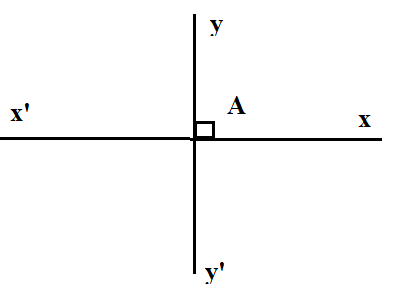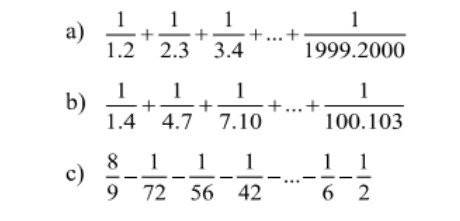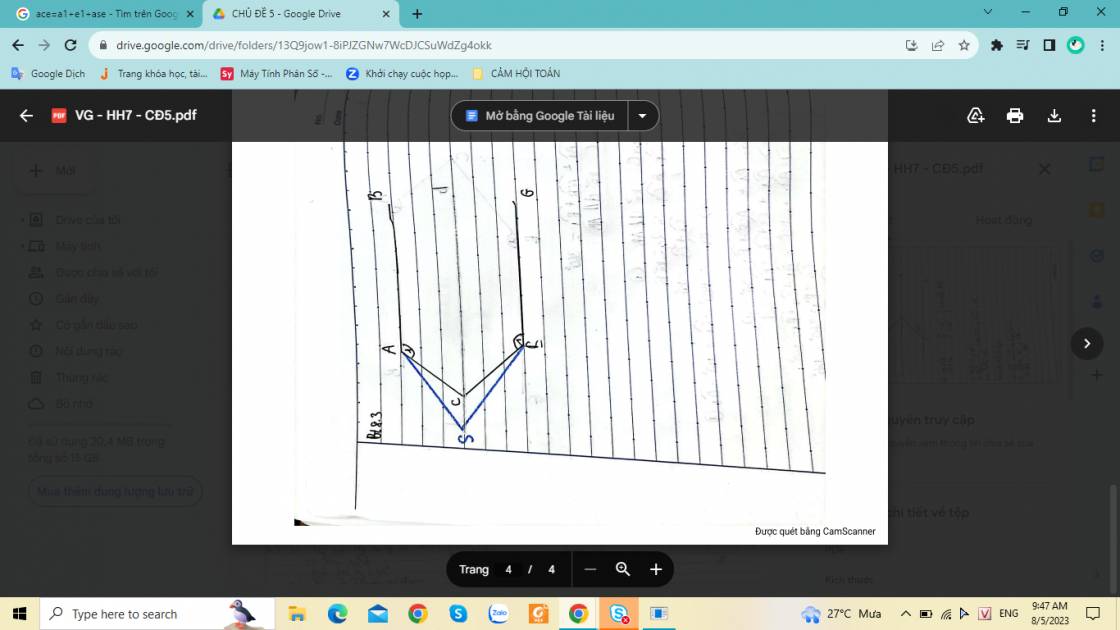tính (thu gọn) :(2x-1).(3x+5)+(-6x mũ3 +5x):x
Hãy nhập câu hỏi của bạn vào đây, nếu là tài khoản VIP, bạn sẽ được ưu tiên trả lời.


\(\left(n+5\right)^2=64\left(n-2\right)^3\)
\(\Leftrightarrow\left(\dfrac{n+5}{n-2}\right)^2=64\left(n-2\right)\) (nếu \(n=2\) thì đồng thời \(n=-5\), vô lý)
Nếu \(64\left(n-2\right)\) không là số chính phương thì \(\dfrac{n+5}{n-2}=8\sqrt{n-2}\), vô lý vì VT là số hữu tỉ trong khi VP là số vô tỉ.
Do đó \(64\left(n-2\right)\) là số chính phương hay \(\dfrac{n+5}{n-2}\inℤ\)
\(\Leftrightarrow\dfrac{n-2+7}{n-2}\inℤ\)
\(\Leftrightarrow1+\dfrac{7}{n-2}\inℤ\)
\(\Leftrightarrow\dfrac{7}{n-2}\inℤ\)
\(\Leftrightarrow n-2|7\)
\(\Leftrightarrow n-2\in\left\{\pm1;\pm7\right\}\)
\(\Leftrightarrow n\in\left\{3;1;9;-5\right\}\)
Thử lại, ta thấy chỉ có \(n=3\) thỏa mãn. Vậy \(n=3\)

a) Số đo \(\widehat{xAy}\) là: 90o vì có kí hiệu vuông góc.
b) Số đo \(\widehat{x'Ay}\):
Vì \(\widehat{x'Ay}\) và \(\widehat{xAy}\) là hai góc kề bù nên
nên \(\widehat{x'Ax}\) = \(\widehat{x'Ay}\) + \(\widehat{xAy}\)
180o = \(\widehat{x'Ay}\) + 90o
\(\widehat{x'Ay}\) = 180o - 90o
\(\widehat{x'Ay}\) = 90o
c) Số đo \(\widehat{x'Ay'}\):
Vì \(\widehat{xAy}\) và \(\widehat{x'Ay'}\) là hai góc đối đỉnh
nên: \(\widehat{x'Ay'}\) = \(\widehat{xAy}\) = 90o
d) Số đo \(\widehat{xAy'}\):
Vì \(\widehat{xAy'}\) và \(\widehat{x'Ay}\) là hai góc đối đỉnh
nên \(\widehat{xAy'}\) = \(\widehat{x'Ay}\) = 90o

\(\left(2x-3\right)\left(x-\dfrac{1}{2}\right)=0\\ \Rightarrow\left[{}\begin{matrix}2x-3=0\\x-\dfrac{1}{2}=0\end{matrix}\right.\\ \Rightarrow\left[{}\begin{matrix}2x=3\\x=\dfrac{1}{2}\end{matrix}\right.\\ \Rightarrow\left[{}\begin{matrix}x=\dfrac{3}{2}\\x=\dfrac{1}{2}\end{matrix}\right.\) (Thêm KL cuối dòng: Vậy \(x\in\left\{\dfrac{3}{2};\dfrac{1}{2}\right\}\))


\(a,\dfrac{1}{1\cdot2}+\dfrac{1}{2\cdot3}+...+\dfrac{1}{1999\cdot2000}\\ =1-\dfrac{1}{2}+\dfrac{1}{2}-\dfrac{1}{3}+\dfrac{1}{3}-\dfrac{1}{4}+...+\dfrac{1}{1999}-\dfrac{1}{2000}\\ =1-\dfrac{1}{2000}\\ =\dfrac{1999}{2000}\\ b,\dfrac{1}{1\cdot4}+\dfrac{1}{4\cdot7}+\dfrac{1}{7\cdot10}+...+\dfrac{1}{100\cdot103}\\ =\dfrac{1}{3}\left(\dfrac{3}{1\cdot4}+\dfrac{3}{4\cdot7}+...+\dfrac{3}{100\cdot103}\right)\\ =\dfrac{1}{3}\left(1-\dfrac{1}{4}+\dfrac{1}{4}-\dfrac{1}{7}+...+\dfrac{1}{100}-\dfrac{1}{103}\right)\\ =\dfrac{1}{3}\cdot\left(1-\dfrac{1}{103}\right)\\ =\dfrac{102}{309}\)
\(c,\dfrac{8}{9}-\dfrac{1}{2}-\dfrac{1}{6}-...-\dfrac{1}{72}\\ =\dfrac{8}{9}-\left(\dfrac{1}{1\cdot2}+\dfrac{1}{2\cdot3}+...+\dfrac{1}{8\cdot9}\right)\\ =\dfrac{8}{9}-\left(1-\dfrac{1}{2}+\dfrac{1}{2}-\dfrac{1}{3}+...+\dfrac{1}{8}-\dfrac{1}{9}\right)\\ =\dfrac{8}{9}-\left(1-\dfrac{1}{9}\right)\\ =\dfrac{8}{9}-\dfrac{8}{9}\\ =0\)

\(\left(5-x\right)\left(7-x\right)< 0\)
\(5-x=0\Rightarrow x=5\)
\(7-x=0\Rightarrow x=7\)
Lập bảng xét dấu
| \(x\) | 5 7 |
| \(5-x\) | + 0 - \(|\) - |
| \(7-x\) | + \(|\) + 0 - |
| \(\left(5-x\right)\left(7-x\right)\) | + 0 - 0 + |
\(\Rightarrow5< x< 7\)

\(A=\dfrac{2}{4.7}-\dfrac{3}{5.9}+\dfrac{2}{7.10}-\dfrac{3}{9.13}+...+\dfrac{2}{301.304}-\dfrac{3}{401.405}\)
\(A=\dfrac{2}{4.7}+\dfrac{2}{7.10}+\dfrac{2}{301.304}...-\left(\dfrac{3}{5.9}+\dfrac{3}{9.13}+...+\dfrac{3}{401.405}\right)\)
\(A=2\left(\dfrac{1}{4.7}+\dfrac{1}{7.10}+\dfrac{1}{301.304}\right)...-3\left(\dfrac{1}{5.9}+\dfrac{1}{9.13}+...+\dfrac{1}{401.405}\right)\)
\(A=2\left(\dfrac{1}{4}-\dfrac{1}{7}+\dfrac{1}{7}-\dfrac{1}{10}+\dfrac{1}{301}-\dfrac{1}{304}\right)...-3\left(\dfrac{1}{5}-\dfrac{1}{9}+\dfrac{1}{9}-\dfrac{1}{13}+...+\dfrac{1}{401}-\dfrac{1}{405}\right)\)
\(A=2\left(\dfrac{1}{4}-\dfrac{1}{304}\right)-3\left(\dfrac{1}{5}-\dfrac{1}{405}\right)\)
\(A=2\left(\dfrac{76}{304}-\dfrac{1}{304}\right)-3\left(\dfrac{81}{5}-\dfrac{1}{405}\right)\)
\(A=2.\dfrac{75}{304}-3.\dfrac{80}{405}=\dfrac{75}{152}-\dfrac{80}{135}=\dfrac{10125-12160}{152.135}=-\dfrac{2035}{152.135}=-\dfrac{407}{4104}\)




\(\left(2x-1\right)\left(3x+5\right)+\left(-6x^3+5x\right):x\)
\(=6x^2+10x-3x-5-6x^3+5x:x\)
\(=-6x^3+6x^2+12x-5:x\)
\(=-6x^2+6x+12-\dfrac{5}{x}=-6\left(x^2-x-12\right)-\dfrac{5}{x}\)
A = (2\(x\) - 1)(3\(x\) + 5) + (-6\(x\)3 + 5\(x\)): \(x\)
A = 6\(x^2\) + 10\(x\) - 3\(x\) - 5 + \(x\)(- 6\(x^2\) + 5): \(x\)
A = 6\(x^2\) + 7\(x\) - 5 - 6\(x^2\) + 5
A = (6\(x^2\) - 6\(x^2\)) + 7\(x\) - (5 - 5)
A = 7\(x\)